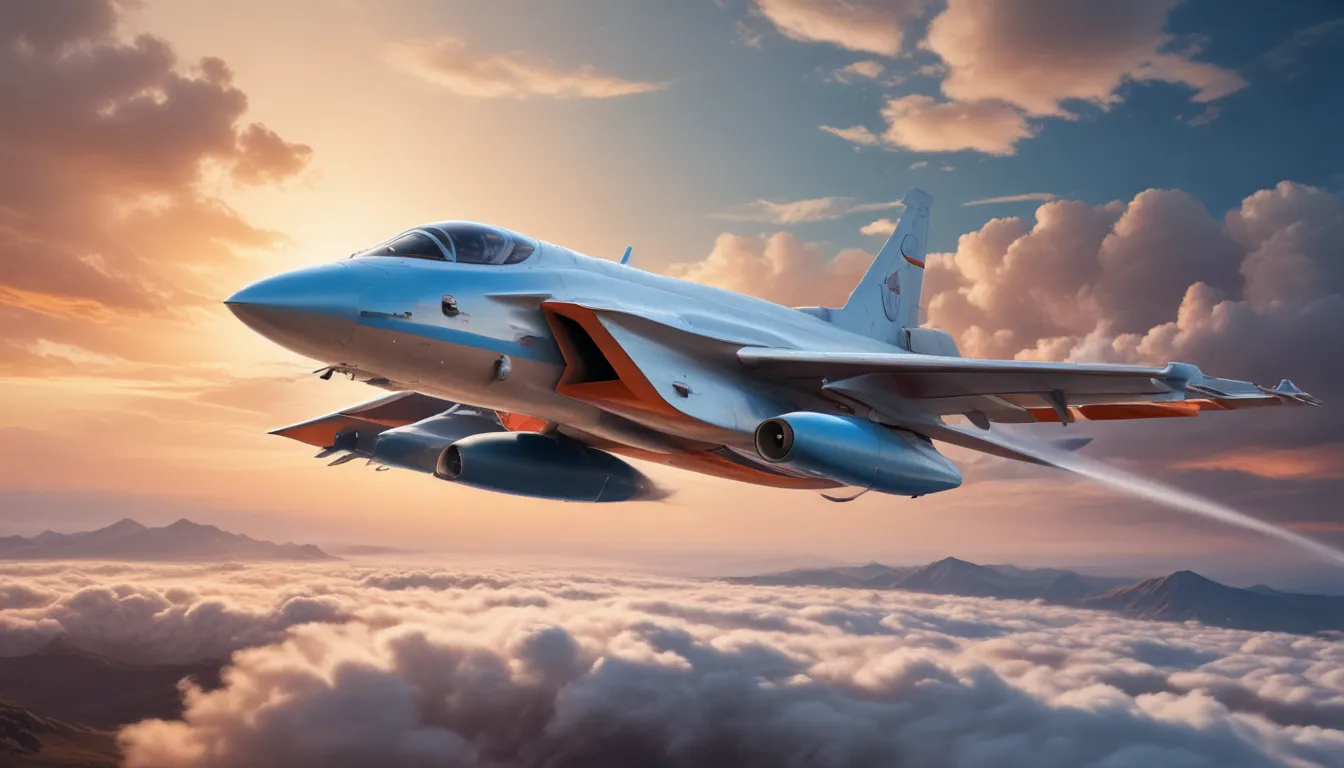A Note About Images: The images used in our articles are for illustration purposes only and may not exactly match the content. They are meant to engage readers, but the text should be relied upon for accurate information.
Welcome to the captivating realm of aerodynamics, where the behavior of air and gases in motion unveils a world of possibilities and innovations. From the graceful flight of birds to the cutting-edge designs of high-speed trains and modern sports equipment, aerodynamics shapes our technological landscape in profound ways. Join us as we delve into 18 fascinating facts about aerodynamics, shedding light on the science behind lift, drag, and the intricate interactions between objects and the air around them.
Unraveling the Foundations of Aerodynamics
Birds: The Pioneers of Flight
The concept of aerodynamics traces its roots back to the remarkable ingenuity of birds in flight. Observing the graceful maneuvers of these aerial creatures, the Wright brothers found inspiration for their groundbreaking aircraft design, paving the way for modern aerodynamics. The principles of lift, drag, and maneuverability learned from birds have laid the foundation for advancements in aviation and aerospace engineering.
Wings: The Key to Aerodynamic Performance
The design of an aircraft’s wings is a critical factor in determining its aerodynamic performance. Engineers meticulously craft wing shapes, also known as airfoils, to optimize lift, drag, and stability during flight. By fine-tuning the curvature and configuration of wings, aerodynamic efficiency is enhanced, influencing fuel economy and the maneuvering capabilities of aircraft.
The Versatility of Aerodynamics
Beyond Aviation: Aerodynamics in Automotive Engineering
Aerodynamic principles extend their influence beyond the skies and into the realm of automotive design. Car manufacturers prioritize aerodynamic styling to minimize air resistance, improve fuel efficiency, and enhance overall performance. Sleek, streamlined shapes and strategic airflow management are key elements in reducing drag and increasing stability at high speeds, showcasing the pivotal role of aerodynamics in modern vehicle design.
Sporting Advancements: Aerodynamics in Sports Equipment
Aerodynamics has revolutionized the world of sports equipment, leading to significant advancements in competitive gear. From cycling helmets to racing suits, aerodynamic principles are leveraged to reduce air resistance and enhance athletes’ speed and performance in various sports. The meticulous design of streamlined equipment reflects the profound impact of aerodynamics on enhancing athletic capability and efficiency.
Exploring the Complex Forces of Aerodynamics
Dynamics of Aerodynamic Forces
Aerodynamics encompasses a complex interplay of forces that affect objects in motion through the air. Key forces include lift, which enables flight by counteracting gravity, and drag, which opposes the object’s forward motion. Understanding and harnessing these aerodynamic forces are fundamental in optimizing the performance and efficiency of flying and moving vehicles across different industries.
Fundamental Force: Drag in Aerodynamics
Drag, a fundamental aerodynamic force, represents the resistance encountered by objects moving through a fluid medium like air or water. Minimizing drag through streamlined designs and efficient airflow management is crucial for enhancing the performance and efficiency of vehicles, structures, and sporting equipment. By reducing drag, engineers can improve speed, maneuverability, and overall effectiveness in various applications.
Aerodynamics in Various Fields
Bridging Disciplines: Aerodynamics in Architecture
The influence of aerodynamics extends to architectural design, particularly in the construction of skyscrapers and bridges. Engineers and architects apply aerodynamic principles to optimize building shapes, mitigate wind-induced stresses, and reduce drag and turbulence. This integration ensures the structural integrity and stability of iconic urban structures, showcasing the interdisciplinary significance of aerodynamics in civil engineering.
Sustainable Solutions: Aerodynamics in Renewable Energy
The field of aerodynamics plays a significant role in the development of renewable energy technologies, particularly in wind turbines. Engineers utilize aerodynamic principles to enhance the efficiency of wind turbine blades, maximizing energy capture from wind currents. This application underscores the transformative impact of aerodynamics in advancing sustainable energy solutions and reducing reliance on traditional fossil fuels.
Pushing Boundaries with Aerodynamics
Innovations in Aerospace Technology
Aerospace engineering harnesses aerodynamic principles to drive innovation in aircraft design, propulsion systems, and space exploration. From supersonic flight to spacecraft reentry, aerodynamics underpins the development of advanced aerospace technologies, shaping the future of air and space travel. The continuous pursuit of enhanced efficiency and performance in aerospace exemplifies the enduring influence of aerodynamics on technological progress.
Speed and Precision: Aerodynamics in Competitive Racing
In motorsports, aerodynamics profoundly influences the design and performance of competitive race cars. Engineers meticulously optimize aerodynamic profiles to enhance downforce, stability, and airflow management, resulting in improved cornering speeds and overall racing performance. The integration of aerodynamics in race car design underscores its pivotal role in achieving speed, precision, and competitive success on the track.
Embracing Aerodynamics in Everyday Life
Competitive Edge: Aerodynamics in Cycling
Aerodynamics significantly impacts the world of competitive cycling, influencing racing strategies and equipment design. Cyclists prioritize aerodynamic positioning and streamlined gear to reduce air resistance, gaining a competitive edge in races. Innovations in bicycle frame design, wheel configurations, and rider posture reflect the pursuit of aerodynamic efficiency in professional cycling, shaping the dynamics of the sport and enhancing performance.
Navigating the Skies: Aerodynamics in Modern Aircraft Engines
The optimization of aircraft engines hinges on the principles of aerodynamics, streamlining airflow and reducing turbulence for improved efficiency. Enhanced aerodynamic design in jet engines leads to better fuel economy, reduced environmental impact, and increased performance in aviation. The integration of aerodynamics in engine technology exemplifies the industry’s commitment to advancing efficiency and sustainability in air travel.
Conclusion: Embracing the Invisible Forces of Aerodynamics
Aerodynamics is a captivating field that influences a myriad of industries and aspects of modern life, from transportation and sports to renewable energy and structural design. By unraveling the intricate dynamics of airflow, engineers and designers continue to unlock innovations that shape our world and drive progress across diverse domains. The enduring impact of aerodynamics underscores its indispensable role in fostering ingenuity, pushing boundaries, and propelling us towards a future defined by technological advancements and sustainable solutions.
FAQs: Exploring Aerodynamics Further
What are the practical applications of aerodynamics?
Aerodynamics finds practical applications in aircraft design, automotive engineering, wind turbine technology, and sports equipment development. Understanding aerodynamics is essential for optimizing performance, efficiency, and safety in these industries.
How does aerodynamics impact everyday life?
Aerodynamics influences everyday life in various ways, from shaping vehicle design and architectural structures to enhancing sports equipment performance. Its pivotal role in transportation, energy production, and design innovation contributes to advancements that improve our daily experiences and interactions with the world around us.
Embark on a fascinating journey through the realms of aerodynamics, where invisible forces shape the way we move, soar, and innovate. From the elegance of bird flight to the precision of competitive racing, aerodynamics continues to inspire advancements that enrich our lives and propel us towards a future of endless possibilities. Join us in celebrating the wonders of aerodynamics and the boundless creativity it inspires in our quest for progress and excellence.






